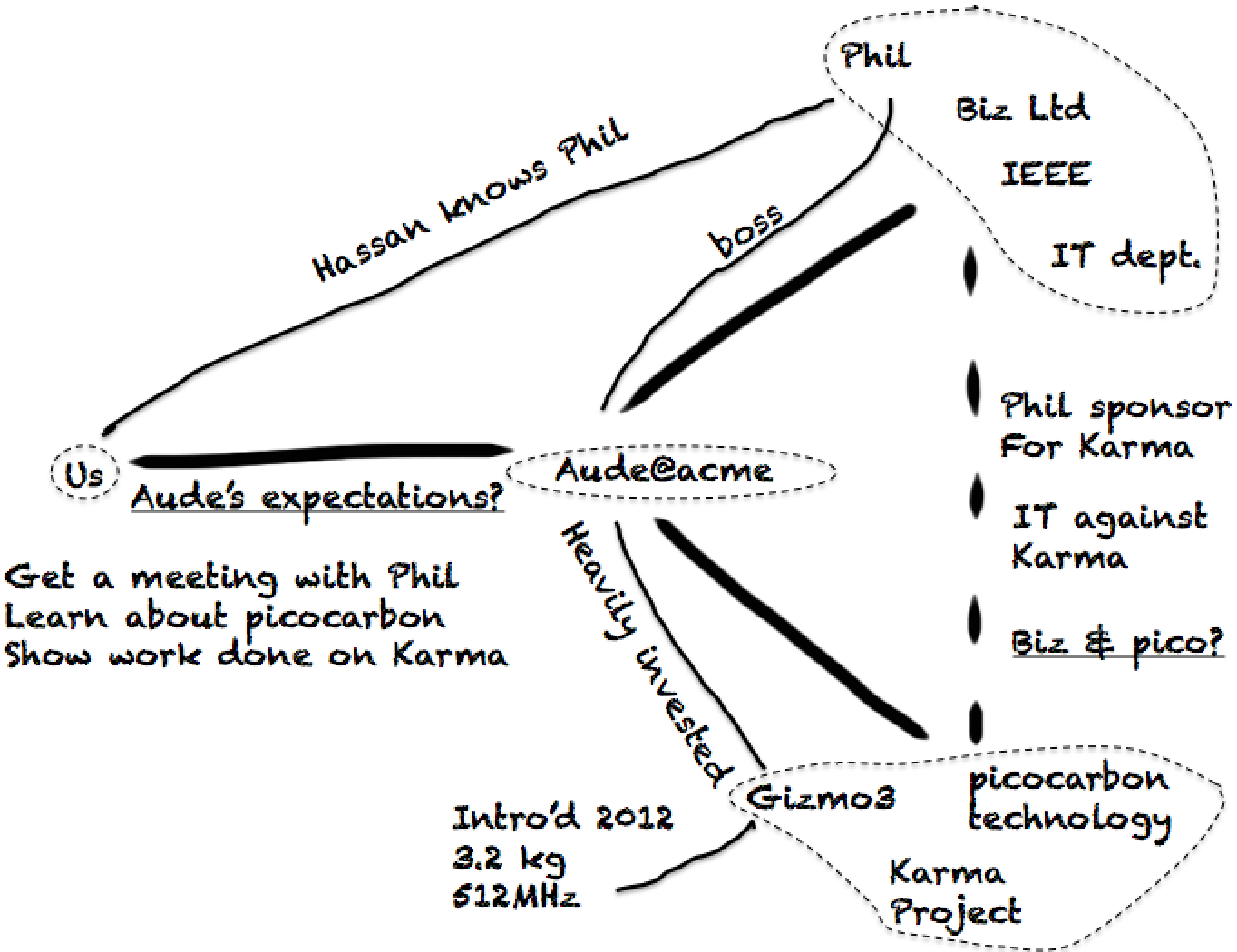DISCOVER-Y for Encounter Preparation (with MAP)

When my encounter preparation includes the identification of Discovery targets, DISCOVER-Y becomes one of the tools used for the Plan part of MAP.
MAP and DISCOVER-Y are completely consistent, and work on the My objectives and Audience parts of MAP can immediately be annotated on zones 1 (me) and 3 (the Audience – my clients) of the DISCOVER-Y diagram. In fact, one way to view DISCOVER-Y when used for encounter preparation is as a two-dimensional variant of MAP.
For encounter preparation, the diagram is drawn explicitly, then the different zones of the Y are annotated with information ‘brainstorm style’. The Y diagram should be thought of as a basic Mind Map skeleton, and so I don't hesitate to add extra nodes and arcs as necessary. For example, if I have a direct relationship with one of the people of organisations listed in zone 5 (who), I may draw an arc that represents it from zone 1 into the cluster of names at zone 5. Of course, when actually drawing the diagram, I may liven things up with colour. It may be used, for example, to differentiate between known facts and things to clarify.
A very simple example of the type of drawing that can be produced when using DISCOVER-Y for encounter preparation is given above. In real life, this would be done on a wall chart, where there would be more room, and colour, and the participants would have the advantage of seeing information added to the diagram gradually. In order to clarify this one, I have therefore added dotted lines around the items in the odd zones. The information associated with these zones is our objectives (‘Get a meeting with Phil,’ etc.), and some data about Gizmo3 (‘Intro’d 2012’, etc.).
The other information on the diagram is about the relationship between nodes, and underline is used here to indicate where that information is missing. Specifically, we don't know what Aude’s expectations are of us, nor do we know what Biz Ltd’s capabilities in pico carbon technology are. We do know that Phil is Aude’s boss, that someone in our organisation called Hassan knows him, and that Aude has invested a lot of energy in Gizmo3. The is also some other relationship information in zone 6.
Imagine working on this type of representation with one or two colleagues, using a large drawing surface, colour pens and plenty of coffee. The Y drives you to think of certain types of information, and provides a useful constraint to an otherwise freeform visual brainstorming process. The resulting picture is unlikely to be very elegant, but the process of producing it is invaluable.
More about DISCOVER-Y and Discovery:
- DISCOVER-Y top
- The DISCOVER-Y tool explained
- DISCOVER-Y for encounter prepration (with MAP)
- DISCOVER-Y in real time (i.e. during an encounter)
- DISCOVER-Y as an aide to debrief
- The importance of Discovery
- Learning Discovery and its challenges
- Discovery helps to optimise delivery
- Discovery guarantees attention
- Effective listening (with checklist and blacklist)
- Playback
- DISCOVER-Y in brief
Examples:
Get the Client Encounters of the Technical Kind book!
